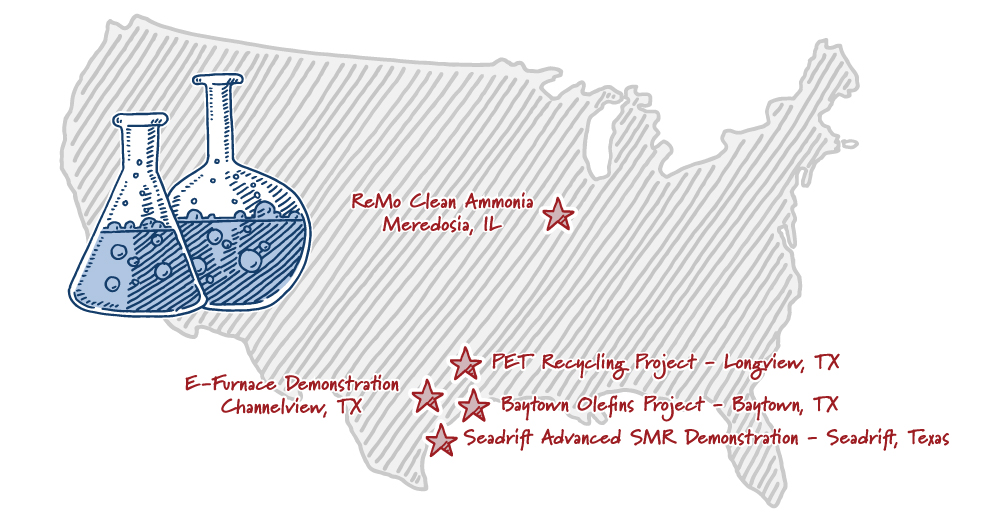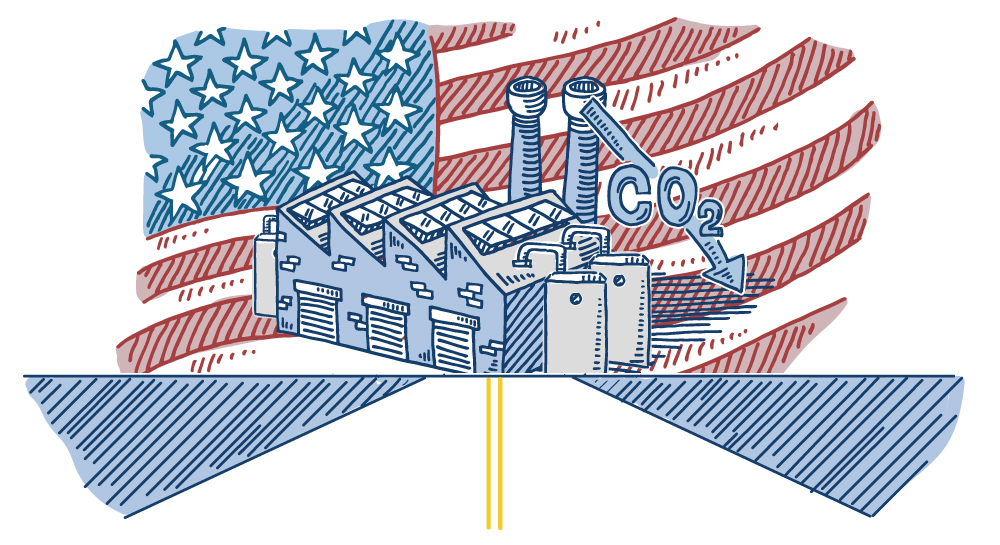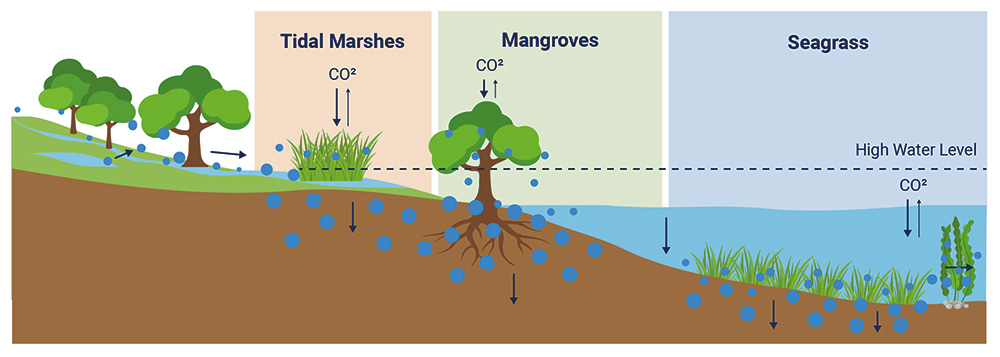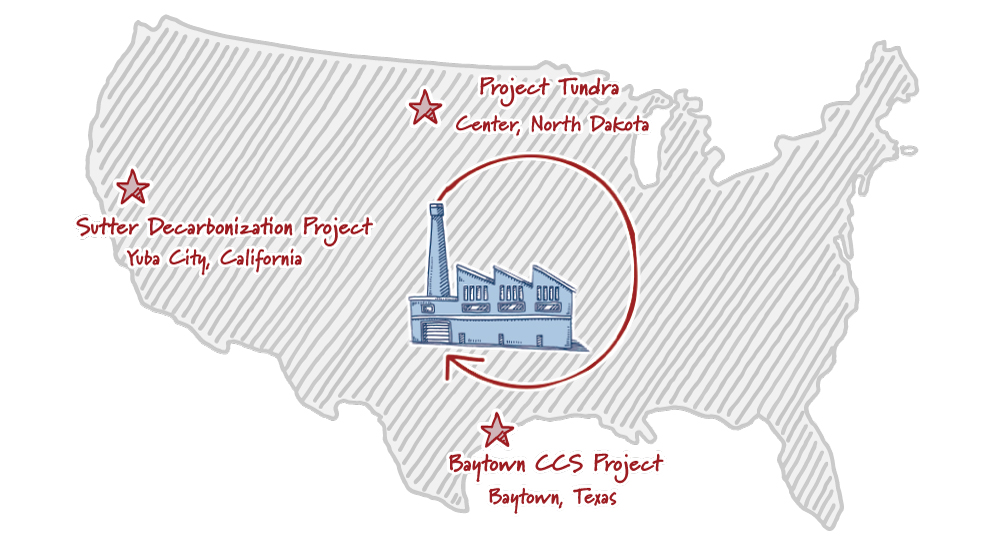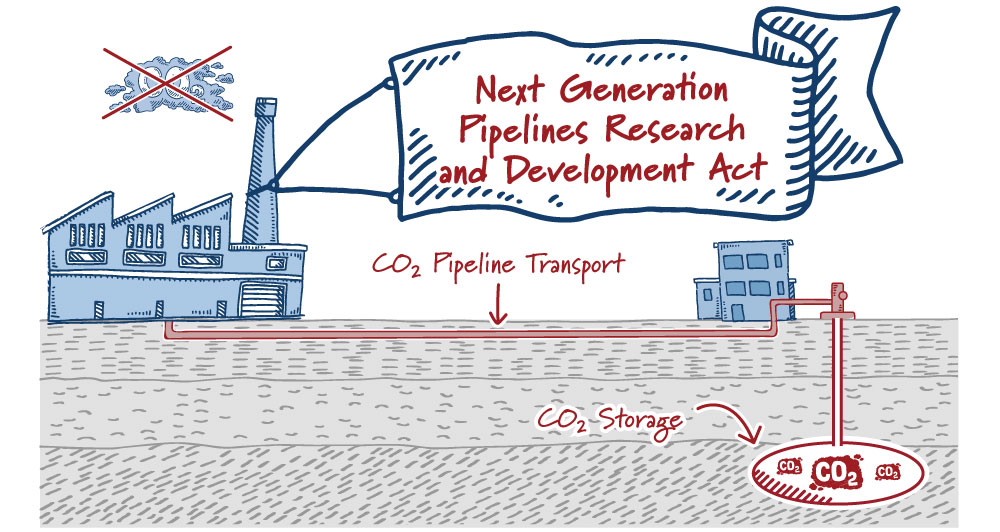Blue carbon is the term used to describe the “watery” nature of carbon captured by the ocean and coastal ecosystems. Coastal blue carbon ecosystems refer to biomass-based coastal habitats, such as salt marshes, mangroves and seagrass meadows, that store carbon dioxide through photosynthesis. These ecosystems are a major carbon sink – storing about 50 percent of the Earth’s carbon, despite occupying less than 5 percent of global land area and less than 2 percent of the ocean. In addition to their carbon storage potential, these ecosystems create flood-resilient communities, provide economic benefits by supporting fisheries, enhance property values and improve nutrient cycling. However, the loss and degradation of coastal blue carbon ecosystems reduce future carbon sequestration potential and can emit carbon dioxide (CO2) back into the atmosphere. Therefore, the restoration, maintenance and conservation of these areas are essential to achieving global emissions reduction goals. Together, this makes coastal blue carbon ecosystems among the world’s greatest natural tools to address climate-related challenges today. In fact, the Intergovernmental Panel on Climate Change (IPCC) has recognized coastal blue carbon as a necessary pathway to harness the resiliency of nature and naturally remove excess carbon from the atmosphere.
This Coastal Blue Carbon 101 provides an overview of this promising natural carbon removal solution and policies that may bolster additional deployment across coastal states. Recommendations include:
- Enhancing support for coastal blue carbon R&D initiatives to understand the carbon sequestration and storage potential of coastal blue carbon projects.
- Developing a collaborative and coordinated effort to map current and future coastal blue carbon ecosystems to determine geographic areas for increasing blue carbon stocks.
- Support the wide-scale deployment of coastal blue carbon pathways through market incentives and by building in carbon removal and sequestration to coastal restoration and creation project designs.
What is Coastal Blue Carbon?
A Nature-based Carbon Removal Solution –
Coastal blue carbon is considered a nature-based carbon dioxide removal (CDR) solution. Nature-based CDR solutions remove and store carbon from the atmosphere through naturally occurring processes – like photosynthesis, which takes sunlight and CO2 from the air to make water and sugar for the plant. Nature-based CDR solutions are recognized as a promising set of pathways to reduce emissions, with the global voluntary carbon market recording a 170% increase in the traded volume of nature-based carbon credits between 2017 and 2018.
The Most Efficient Natural Carbon Sink –
In the U.S., coastal blue carbon ecosystems sequester an estimated additional 6.7 million tons of carbon dioxide equivalents (MtCO2e) annually, as of 2022. This is equivalent to CO2 emissions from energy usage in over 960 thousand U.S. homes each year. Globally, coastal blue carbon ecosystems sequester 0.84 billion tons (Gt) CO2 per year. It has been estimated that coastal blue carbon can annually sequester carbon at a rate ten times greater than mature tropical forests while covering far less area, making them the most efficient natural carbon sinks in the world, all while providing multiple co-benefits. This is possible because coastal blue carbon ecosystems are made up of oxygen-depleted flooded soil, which slows down decomposition.
A Solution for Economic and Environmental Resiliency –
Harnessing coastal blue carbon pathways can improve resiliency and bolster the economies of coastal communities by creating solutions in the face of extreme weather and changes in marine ecosystems. These nature-based solutions can be integrated into community planning to provide (1) billions of dollars in savings during floods, (2) economic benefits by maintaining habitats for marine life used by fisheries that support economic activity and food supply, (3) improved water quality for residents and wildlife and (4) protect dozens of military installments and training grounds from storm surge and coastal flooding.
Types of Coastal Blue Carbon
The three main types of coastal blue carbon ecosystems are salt marshes, mangrove forests and seagrass meadows. Salt marshes are coastal wetlands flooded and drained by salt water brought in by the tides and are dominated by plants such as grasses, reeds and sedges. Salt marshes can be found on the coasts of the United States, with about half of the nation’s salt marshes located along the Gulf Coast. Mangroves are salt-tolerant trees that grow where land and sea meet, typically along shores, rivers and estuaries. Mangrove forests in the U.S. are found throughout the Gulf of Mexico, although increases in water temperature may lead to their northward expansion Figure 1. Seagrass is aquatic grass found in shallow coastal waters around the world. Figure 2 shows that sea level determines the designation of these ecosystems. Tidal marshes and mangrove forests exist both above and below sea level, while seagrass is strictly underwater. Table 1 provides a comparison between these three coastal blue carbon ecosystems.
Water level determines the location of coastal blue carbon ecosystems

Source: Nature Reviews, Earth & Environment
Comparison of coastal blue carbon ecosystems

Sources: 1. Louisiana mangrove projects, 2. Louisiana salt marsh project, 3. Florida seagrass project
Estimated ranges of coastal blue carbon in the U.S. from the Commission for Environmental Cooperation. Estimated carbon sequestration rates of coastal blue carbon pathways from the National Academies of Sciences, Engineering, and Medicine.

Mangroves
Mangroves are salt-tolerant trees that grow where land and sea meet, typically along shores, rivers and estuaries. Mangrove forests cover 33-49 million acres around the world, which is on average the size of the state of Iowa. A majority of mangrove forests in the U.S. can be found on the Gulf Coast, primarily in Florida and Louisiana, due to warmer temperatures. An estimated 500,000 acres of mangroves in the coastal areas of Central and South Florida.
Mangrove carbon sequestration –
Mangrove forests store more than 11.7 Gt of carbon globally, which is equivalent to 22% of 2023 global emissions. The restoration of all feasible mangrove regions in the world has been estimated to sequester up to an additional 688 Mt of carbon over a 40-year period, a greater carbon storage potential than afforestation. With optimal market incentives in place, 20% of global mangrove forests can be restored and contribute to the removal of 29.8 MtCO2e each year. The mangrove forests in Florida’s Everglades National Park can store carbon valued at nearly $3 billion.
Benefits of mangrove restoration and protection –
Mangroves make up resilient coastal ecosystems that withstand damage from storms, preventing over $11 billion in property damage globally every year. For example, during Hurricane Irma in Florida, mangroves averted $1.5 billion in storm damages and protected over half a million people. Mangrove forests also provide key ecosystem benefits, including (1) serving as a habitat and nursery for many marine species, (2) providing economic opportunity for coastal communities and (3) supplying seafood for millions of people. They are also valuable for fisheries, with an annual median value of over $15,000 per acre for fisheries in the Gulf of California.

Salt Marshes
Salt marshes are coastal grassland ecosystems that are regularly flooded by seawater. North America is home to around 40% of global salt marshes. The U.S. has approximately 3.8 million acres of salt marshes, about a quarter larger than the state of Connecticut. A vast interconnected 1 million acres stretches from North Carolina to Florida. Louisiana accounts for up to 40% of the coastal salt marshes in the contiguous U.S.
Salt marsh carbon sequestration –
Globally, salt marshes store an estimated 1.4-2.4 Gt of carbon, which is equivalent to removing over 571 million vehicles from the road each year. Restored marshes could result in approximately 13 to 207 Mt of additional CO2 accumulation per year, equivalent to removing over 49 million vehicles from the road each year. This would offset 0.51% of global energy-related CO2 emissions, a substantial amount considering that salt marshes make up less than one percent of Earth’s surface. As of 2013, Louisiana’s marshes were estimated to bury and store 4.3 million tons of carbon per year, which was 47% of the capacity of North America and 5-21% of the global capacity for carbon in tidal wetlands. North Carolina’s salt marshes currently hold around 64 million tons of carbon and sequester an additional 250,000 tons each year.
Benefits of salt marsh restoration and protection –
Salt marshes play an important role in coastal flood protection, fisheries support and biodiversity enhancement. Salt marshes protect coastal communities from natural disasters that can cause infrastructural storm and flooding damage, preventing over $23 billion in storm protection services annually in the United States. Salt marshes, and the estuaries that support them, also provide habitat for more than 75% of commercial and recreational fish species in the U.S. including white shrimp, blue crab, redfish and flounder.

Seagrass
Seagrass meadows are underwater coastal ecosystems composed of aquatic grasses. Globally, the documented area of seagrass coverage is accepted by researchers to be an underestimate at 43.7 million acres, equivalent to nearly the size of the state of Oklahoma. This is an underestimate because many seagrass meadows have not been fully charted. Models that consider uncharted areas indicate a three times greater area of seagrass meadows at 148 million acres, or similar to the size of the state of Texas.
Seagrass Carbon Sequestration –
Globally, seagrass meadows could store as much as 8.5 Gt of carbon, equivalent to energy emissions from over 1.1 billion homes in the U.S. each year. This is as much as salt marshes and mangroves combined, primarily due to more global acreage. Seagrass habitat throughout the Mississippi River Delta stores up to 35 Mt of carbon, a greater storage capacity than any other terrestrial or marine area and even higher than seagrass habitats in other locations.
Benefits of seagrass restoration and protection –The 1 million acres of salt marshes within the South Atlantic states (Florida, Georgia, South Carolina and North Carolina) shield over a dozen military installations and training grounds from storm surges and coastal flooding. Economically, seagrass meadows contribute over $20 billion each year to Florida by providing habitat for commercially and recreationally important fish. For instance, a single acre of seagrass meadow can be home to 40,000 fish and 50 million invertebrates. Additionally, coastal tourism and recreation in seagrass ecosystems along Florida’s coast generates $250 million annually across 8,000 jobs and 500 companies.
Policy
Research and Development (R&D) — Continued support for coastal blue carbon R&D initiatives, as carried out by Federal research agencies like the National Oceanic and Atmospheric Administration (NOAA), National Aeronautics and Space Administration (NASA), Department of Energy (DOE), U.S. Geological Survey (USGS) and the National Science Foundation (NSF), will be important to understand the carbon sequestration and storage potential of coastal blue carbon projects. R&D initiatives could include long-term research studies examining the impact of (1) different coastal ecosystems, (2) plant species and (3) changes in climate or management during the maintenance of projects. R&D will also be needed to improve the consistency and accuracy of measurement, monitoring, reporting and verification (MMRV) of emissions from coastal blue carbon projects by improving remote sensing measurement tools and methods, including for satellites and aircraft.
Data Collaboration and Coordination — A collaborative and coordinated effort between federal agencies to map current and future coastal blue carbon ecosystems is necessary to determine geographic areas with the greatest potential for increasing blue carbon stocks. This collaborative data resource could expand on existing projects to include information on ongoing and planned coastal blue carbon projects. A project that could be expanded is the NASA-USGS National Blue Carbon Monitoring System, which integrates nationally available data sets, satellite data and field data to refine models used to measure carbon stocks and fluxes in changing coastal wetlands.
Wide-scale Deployment — To support the wide-scale deployment of coastal blue carbon pathways, coastal restoration and creation projects could design their planning processes with carbon removal and sequestration built-in. An existing projects that could implement this is the Department of Defense’s Readiness and Environmental Protection Integration Program (REPI), which preserves natural habitats near military installations through stakeholder partnerships. Market incentives and technology-inclusive regulatory pathways may be helpful in encouraging the incorporation of carbon removal into coastal restoration planning processes. Market incentives could look like tax incentives aimed at encouraging the incorporation of carbon measurements into projects, and purchase prizes, such as DOE’s Commercial CDR Purchase Pilot Prize, which aims to demonstrate how technology-neutral CDR purchase contracts can catalyze innovation. Streamlined permitting and regulatory processes that reflect the value of coastal blue carbon projects could also increase deployment and carbon removal.
